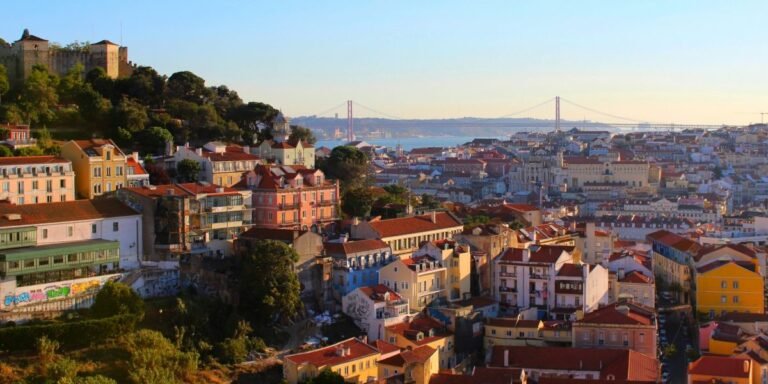The closure of superstores in Portland is having significant and wide-reaching impacts on the local economy, communities, real estate, and consumer behavior. As large retail outlets shut their doors, the effects ripple across multiple sectors, leaving a mix of challenges and opportunities for Portland’s residents and businesses. In this article, we will explore the various consequences of these closures and how they are reshaping the local landscape.
Economic Impact
Superstore closures have immediate and far-reaching economic implications, particularly for employees, suppliers, and local governments.
Job Losses: One of the most direct consequences of superstore closures is the loss of jobs. Superstores often employ hundreds of workers, and when they shut down, many employees are left scrambling to find new employment. This can increase local unemployment rates and put pressure on public services like unemployment benefits. Additionally, the loss of these jobs may disproportionately affect lower-income workers who rely on retail employment.
Reduced Local Tax Revenue: Superstores contribute significantly to local tax revenue through sales and property taxes. When these businesses close, cities and towns face a reduction in these revenue streams. This can impact public services and infrastructure projects that rely on this funding, potentially leading to budget shortfalls and cutbacks in essential services.
Supplier Impact: Superstores are also major buyers of goods from local suppliers and vendors. When a large retailer closes, these smaller suppliers may lose key contracts, negatively affecting their operations and potentially leading to layoffs or business closures. The entire supply chain can be disrupted, from manufacturers to logistics companies that deliver goods to these stores.
Effects on Local Communities
The closure of superstores doesn’t just affect the economy; it also has a profound impact on the communities they serve.
Access to Affordable Goods: Superstores often provide a wide range of low-cost products, including groceries, clothing, and household goods. When these stores close, many low-income families lose access to affordable essentials, which can strain their household budgets. This is particularly concerning in food deserts, where superstores might have been the primary source of fresh and affordable food.
Increased Shopping Costs: With fewer superstores in operation, residents may be forced to travel farther to purchase essential goods. This can increase transportation costs and inconvenience, especially for those who rely on public transit or live in rural or underserved areas. For many, the added burden of time and money makes everyday shopping more difficult.
Impact on Nearby Small Businesses: The effect of superstore closures on small businesses can vary. On one hand, small retailers may see an increase in traffic as customers look for alternatives to the superstores. On the other hand, some small businesses that relied on the foot traffic generated by nearby superstores could suffer a decline in customers, leading to potential closures or decreased sales.
Real Estate and Urban Development
Superstore closures also affect the real estate market and urban development in Portland.
Vacant Retail Spaces: When a superstore closes, it often leaves behind a large, vacant building. These empty spaces can negatively impact real estate values in the surrounding area. Empty lots and vacant stores can also deter new businesses from moving into the neighborhood, contributing to urban decay and lower foot traffic in commercial districts.
Re-development Opportunities: On the flip side, vacant superstore locations offer an opportunity for redevelopment. These large spaces could be repurposed for different uses, such as housing developments, community centers, or new commercial ventures. In some cases, these sites have been transformed into multi-use spaces that blend retail, office, and residential units, offering revitalization opportunities for struggling neighborhoods.
Urban Blight: If not redeveloped promptly, vacant superstores can contribute to urban blight. Large, empty buildings often become eyesores, attracting vandalism and reducing neighborhood appeal. This can lead to a decline in property values and a negative perception of the area, making it harder to attract investment or new residents.
Social and Demographic Changes
The social and demographic impact of superstore closures is significant, particularly for vulnerable communities.
Disproportionate Impact on Low-Income and Minority Communities: Superstore closures often disproportionately affect low-income and minority communities. These populations are more likely to rely on superstores for affordable goods, and when these stores close, it can exacerbate economic disparities. The reduced access to essentials, coupled with potential job losses, puts additional strain on already struggling communities.
Community Displacement: Superstore closures, coupled with potential redevelopment, may contribute to community displacement. As neighborhoods change and new developments attract higher-income residents, existing residents may be priced out, leading to gentrification and the displacement of long-standing communities.
Consumer Behavior Shifts
The closure of superstores is also influencing shifts in consumer behavior, with some lasting effects on shopping habits.
Online Shopping Growth: One of the most notable shifts is the increase in online shopping. As superstores close, many consumers are turning to e-commerce platforms like Amazon for convenience and access to a wide range of products. This shift toward online shopping is accelerating, especially as consumers become more comfortable with digital retail options.
Rise of Local Markets: While some consumers turn to e-commerce, others are showing increased interest in supporting local businesses and farmers’ markets. As superstores close, there is a growing movement to shop locally and invest in community-based retailers, creating opportunities for small businesses to thrive. This trend could lead to a resurgence of specialized stores and local markets that offer unique products and experiences.
Broader Retail Industry Trends
Superstore closures in Portland reflect broader trends in the retail industry, particularly the shift away from large physical stores.
Shift to E-Commerce: The rise of e-commerce has been a major factor contributing to superstore closures. Online retailers offer convenience, often with lower overhead costs than traditional brick-and-mortar stores. As more consumers move to online shopping, superstores are struggling to compete, leading to widespread closures.
Changing Consumer Preferences: In addition to the shift to e-commerce, consumer preferences are evolving. Many shoppers are now seeking more personalized, experiential retail experiences rather than the one-size-fits-all approach of superstores. This shift in demand has driven the rise of boutique stores, pop-up shops, and retailers that offer specialized services or niche products.
Environmental Impact
Superstore closures also have environmental consequences, affecting everything from transportation to urban planning.
Increased Carbon Footprint: As residents are forced to travel longer distances to shop, the carbon footprint of individual consumers may increase. Longer trips for essentials lead to more fuel consumption and emissions, contributing to environmental degradation.
Waste from Vacated Properties: Large vacant buildings create challenges for urban planners and environmentalists. These empty structures can sit idle for years, contributing to urban decay and requiring costly demolition or redevelopment. Without proper management, these properties can also become sources of waste and pollution.
The closure of superstores in Portland is having far-reaching effects on the local economy, communities, real estate, and consumer behavior. While the loss of jobs, tax revenue, and access to affordable goods poses significant challenges, there are also opportunities for redevelopment and a shift toward more localized, sustainable consumer habits. The long-term impact of these closures will depend on how the city and its residents adapt, but it is clear that the retail landscape in Portland is undergoing a significant transformation.









